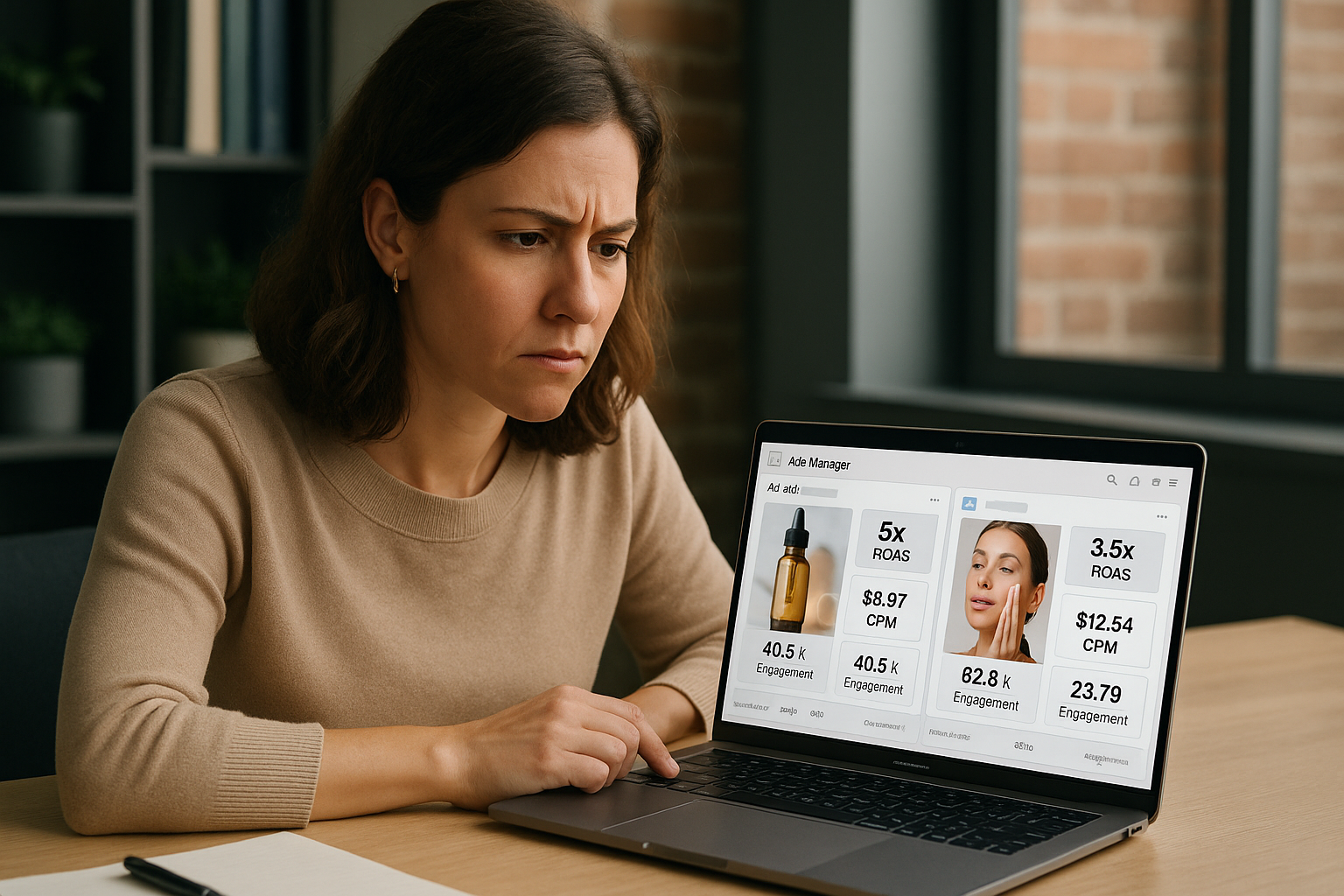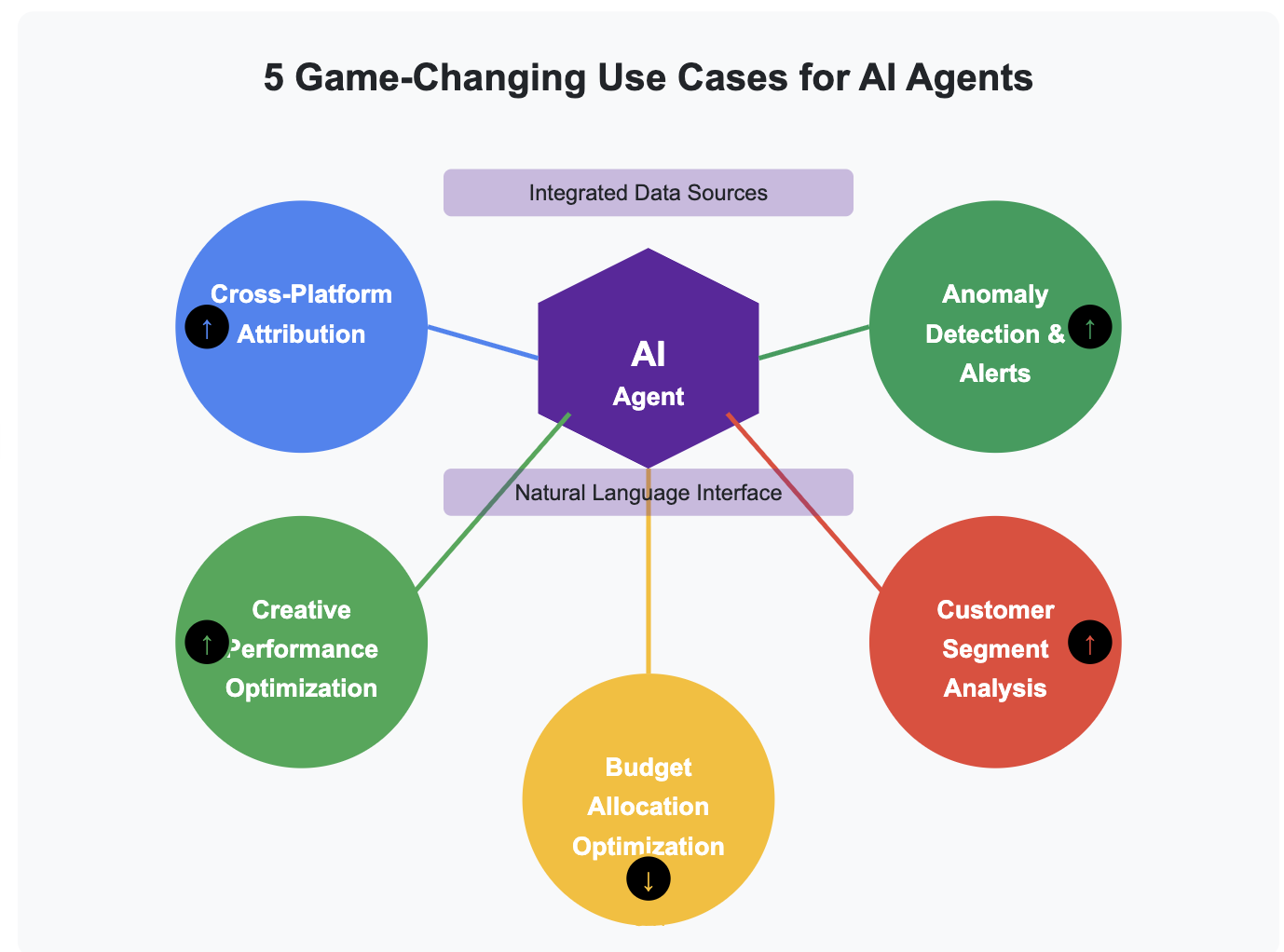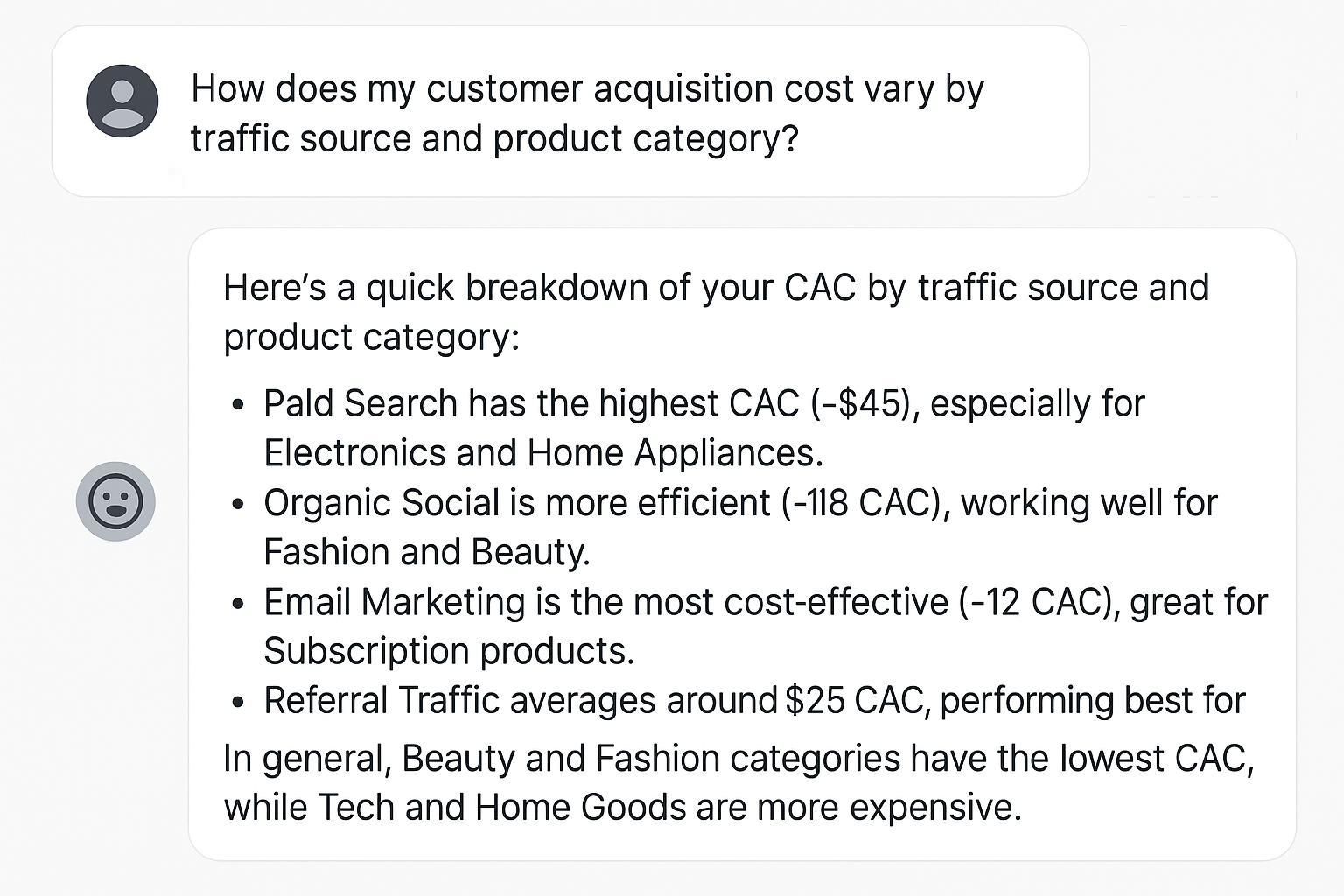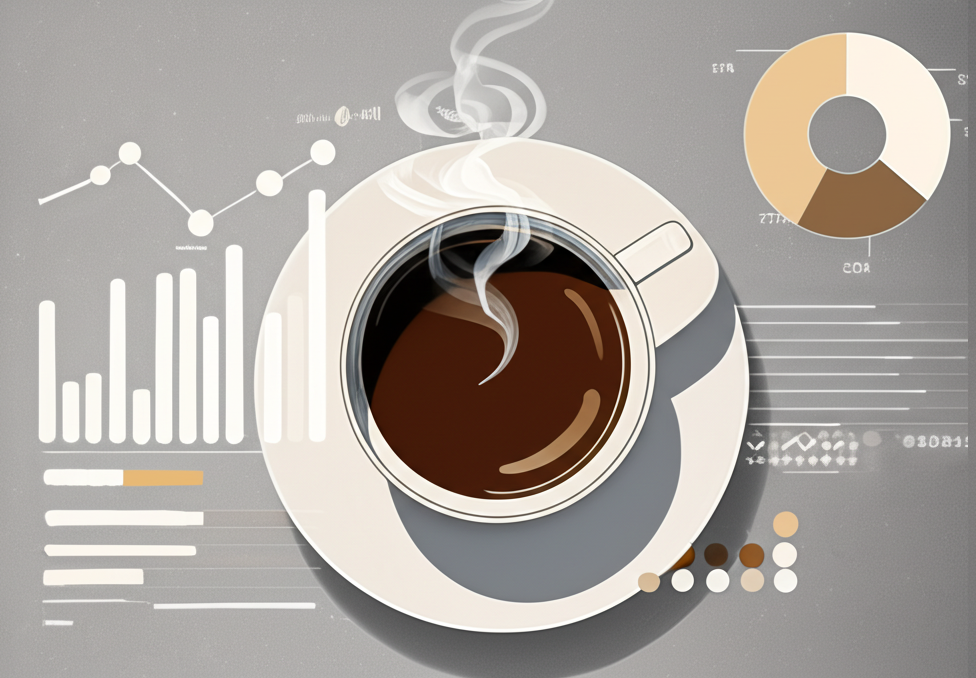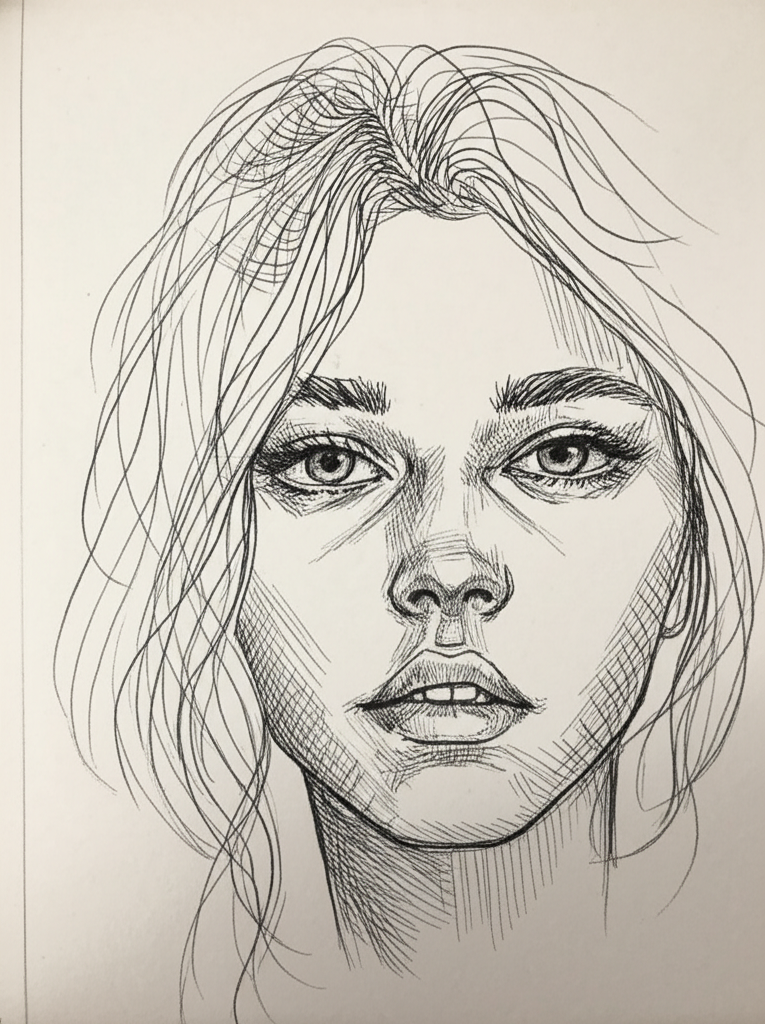Decoding High-Performance Creative: The 7 Elements AI Agents Analyze to Predict Ad Success
The difference between a $10 CPM and a $50 CPM often comes down to 7 specific creative elements - and now AI can identify them instantly.
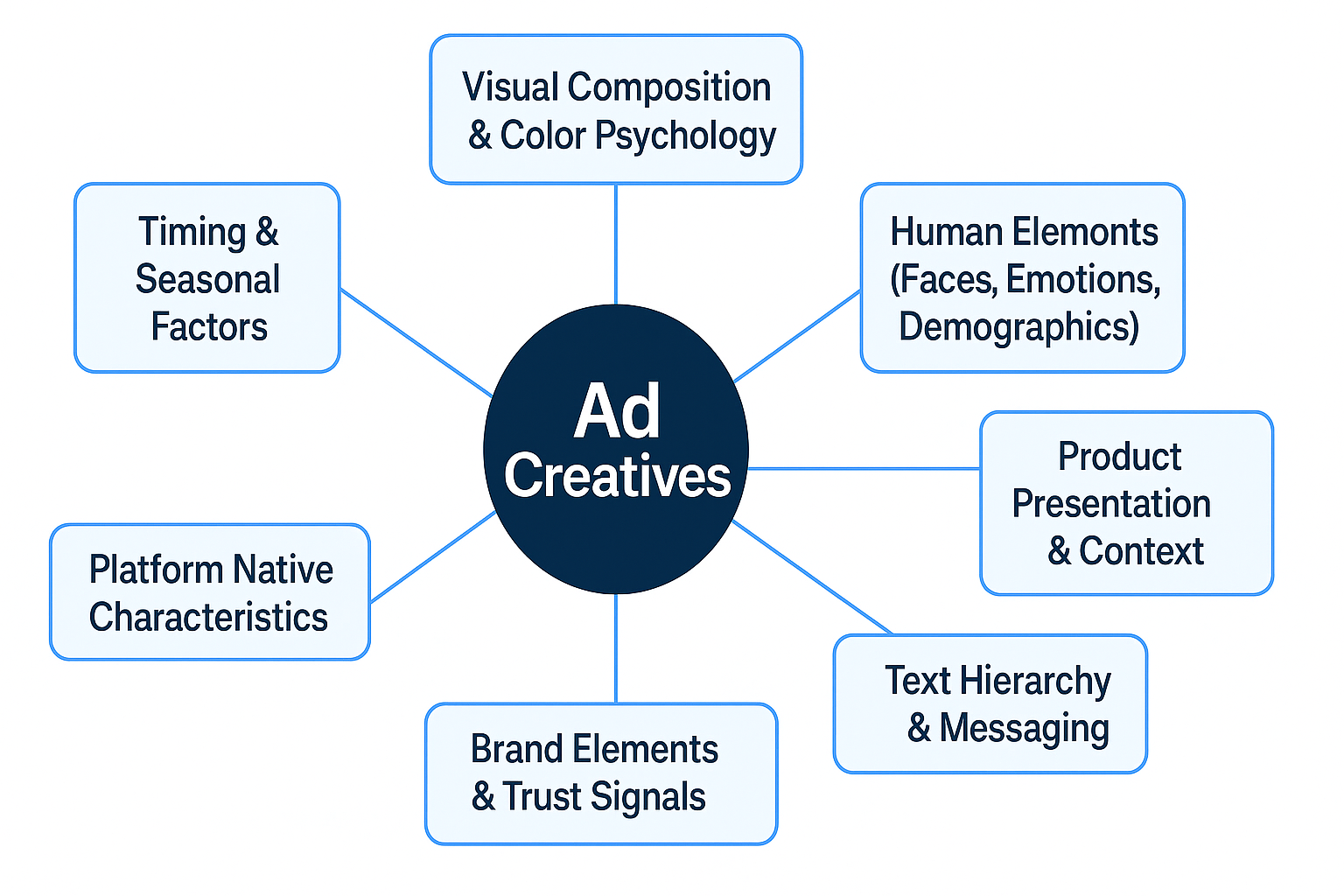
The difference between a $10 CPM and a $50 CPM often comes down to 7 specific creative elements - and now AI can identify them instantly.
The $100,000 Pattern That Changed Everything
Marcus, founder of a premium supplement brand, was burning through $20,000 monthly on Meta ads with mediocre results. His average CPM hovered around $45, and his conversion rates were stuck at 1.2%.
Then he discovered something that transformed his entire approach.
While analyzing his ad account with AdXpert's creative intelligence platform, he noticed that his three best-performing ads - the ones delivering $8 CPMs and 4.8% conversion rates - all shared seven specific characteristics that his failing ads lacked.
Within 30 days of systematically applying these seven elements to new creatives, Marcus dropped his average CPM to $12 and increased his conversion rate to 3.9%. His monthly ad spend stayed the same, but his revenue tripled.
"I finally understood that high-performing ads aren't accidents," Marcus told me. "There's a science to what works, and AdXpert made those patterns impossible to ignore."
Today, we're breaking down the exact seven elements that separate winning ads from expensive failures - and showing you how AI agents like AdXpert analyze them to predict success before you spend a dollar.
Why Most Creative Analysis Fails (And What Actually Works)
Traditional creative analysis looks at surface metrics: "This ad got more clicks." But that tells you nothing about why it worked or how to replicate that success.
The Problem with Traditional Analysis:
- Post-mortem insights: You learn after the damage is done
- Correlation vs. causation: You can't tell which elements actually drove performance
- Human bias: We see what we want to see, not what the data shows
- Scale limitations: Impossible to analyze hundreds of creative elements manually
What AI Creative Intelligence Does Differently:
AI agents analyze creative elements at a granular level, processing thousands of data points to identify the specific combinations that drive performance. AdXpert's proprietary algorithms examine over 200 creative variables simultaneously, revealing patterns that human analysis would miss.
The result? Predictive insights that tell you which creative elements will perform before you launch.
The 7 Critical Elements That Determine Ad Performance
After analyzing millions of dollars in ad spend across thousands of DTC campaigns, AI agents have identified seven core elements that consistently predict creative success:
1. Visual Composition & Color Psychology
What AI Analyzes:
- Color combinations and their psychological impact
- Visual hierarchy and focal points
- Composition balance and eye-tracking patterns
- Contrast ratios and attention-grabbing elements
Performance Patterns:
- Ads with high-contrast color schemes see 23% higher click-through rates
- Warm colors (reds, oranges) drive 31% more impulse purchases for consumer goods
- Cool colors (blues, greens) increase trust and perform better for supplements/health products
- Visual balance affects conversion rates by up to 45%
Actionable Application:
- Test color schemes that align with your product category psychology
- Ensure high contrast between your CTA and background
- Use color to guide the viewer's eye toward your desired action
2. Human Elements (Faces, Emotions, Demographics)
What AI Analyzes:
- Facial expressions and emotional authenticity
- Age, gender, and demographic representation
- Eye contact direction and engagement
- Authenticity vs. staged appearance
Performance Patterns:
- Genuine smiles increase engagement by 27% compared to neutral expressions
- Direct eye contact with the camera improves click-through rates by 18%
- Age-appropriate models (within 5-10 years of target demographic) see 34% better performance
- Authentic, candid shots outperform professional studio photos by 41% for DTC brands
Example: A skincare brand tested two identical ads - one with a professional model in studio lighting, another with a customer's authentic selfie. The authentic selfie delivered significantly better ROAS and lower CPM.
Actionable Application:
- Match human elements to your target demographic
- Prioritize authentic emotions over perfect staging
- Use direct eye contact to create connection
- Test user-generated content vs. professional photography
3. Product Presentation & Context
What AI Analyzes:
- Product angles and positioning
- Environmental context and lifestyle integration
- Scale and proportion relationships
- Usage demonstration vs. static display
Performance Patterns:
- Products shown in use context perform 52% better than isolated product shots
- 45-degree angle shots increase perceived value by 28%
- Lifestyle integration ads see 39% higher conversion rates
- Before/after presentations drive 64% more purchases for transformation products
Example: A fitness equipment brand increased their ROAS substantially by switching from studio product shots to in-home usage scenarios. AdXpert's analysis revealed that contextual presentation was the #1 performance driver for their audience.
Actionable Application:
- Show products in natural usage environments
- Demonstrate transformation or results when applicable
- Test different angles to find your optimal presentation
- Include scale references to help viewers understand size
4. Text Hierarchy & Messaging
What AI Analyzes:
- Headline structure and emotional triggers
- Text-to-image ratio and readability
- Font choices and visual hierarchy
- Message clarity and benefit communication
Performance Patterns:
- Headlines with numbers perform 36% better than those without
- Benefit-focused copy outperforms feature-focused copy by 43%
- Questions in headlines increase engagement by 29%
- Urgency phrases boost conversion rates by 22% when used appropriately
High-Performing Formula Patterns:
- "How [Target Audience] [Achieve Desired Outcome] in [Time Frame]"
- "[Number] [Benefits] That [Solve Problem] for [Target Audience]"
- "The [Adjective] Way to [Achieve Goal] Without [Common Objection]"
Actionable Application:
- Lead with benefits, not features
- Use specific numbers when possible
- Test question-based headlines
- Ensure text is readable on mobile devices
5. Brand Elements & Trust Signals
What AI Analyzes:
- Logo placement and visibility
- Social proof elements (reviews, testimonials, badges)
- Brand consistency across creative elements
- Trust indicators and credibility markers
Performance Patterns:
- Subtle logo placement (corner/bottom) performs 19% better than prominent branding
- Customer review integration increases conversion rates by 31%
- "As seen in" media badges boost credibility and CTR by 24%
- Money-back guarantees reduce purchase hesitation by 37%
Trust Signal Hierarchy (Most to Least Effective):
- Customer testimonials with photos
- Media mentions and awards
- Money-back guarantees
- Secure payment badges
- Social media follower counts
Actionable Application:
- Include authentic customer testimonials
- Display media mentions prominently
- Use guarantee language to reduce risk perception
- Keep branding subtle but present
6. Platform Native Characteristics
What AI Analyzes:
- How "ad-like" vs. "organic" content appears
- Platform-specific formatting and conventions
- Native content patterns and user expectations
- Engagement behavior differences across placements
Performance Patterns:
- Native-looking content gets 47% higher engagement than obvious ads
- User-generated content style increases authenticity perception by 56%
- Platform-specific formats (Stories vs. Feed) require different approaches
- Organic-style captions outperform sales-focused copy by 33%
Platform-Specific Insights:
- Instagram Feed: Square formats with authentic captions
- Instagram Stories: Vertical, mobile-first with interactive elements
- Facebook Feed: Longer-form content with detailed descriptions
- Instagram Reels: Fast-paced, trend-aware, entertainment-first
Actionable Application:
- Study top organic content in your niche
- Adapt ad creative to look native to each platform
- Use platform-specific features (polls, stickers, etc.)
- Test organic-style captions vs. traditional ad copy
7. Timing & Seasonal Factors
What AI Analyzes:
- Seasonal relevance and contextual appropriateness
- Cultural and holiday alignment
- Trending topics and current events integration
- Time-sensitive messaging and urgency
Performance Patterns:
- Seasonally relevant creative performs 41% better than generic content
- Holiday-themed ads see 67% higher engagement during relevant periods
- Trend-aware content gets 53% more viral potential
- Time-sensitive messaging increases urgency and conversion by 28%
Actionable Application:
- Plan creative themes around seasonal cycles
- Incorporate relevant holidays and cultural moments
- Test time-sensitive messaging during appropriate periods
- Monitor trending topics for integration opportunities
How AdXpert Analyzes These Elements (The Technical Magic Made Simple)
AdXpert's AI platform processes these seven elements through advanced computer vision and natural language processing:
Visual Analysis Engine:
- Scans every pixel for color, composition, and visual hierarchy
- Identifies human faces, expressions, and demographic characteristics
- Analyzes product presentation and contextual elements
- Maps visual attention patterns and engagement zones
Text Intelligence System:
- Processes headline structure and emotional triggers
- Analyzes readability and message clarity
- Identifies high-performing language patterns
- Scores urgency and benefit communication effectiveness
Performance Correlation:
- Cross-references creative elements with performance data
- Identifies winning combinations and patterns
- Predicts performance based on historical analysis
- Provides optimization recommendations for improvement
Real-Time Insights: Users get instant scores and recommendations: "This creative has a 73% predicted success rate. Suggested improvements: Increase contrast by 15%, test benefit-focused headline, add customer testimonial."
Putting It All Together: The High-Performance Creative Formula
The most successful DTC ads optimize across all seven elements simultaneously:
The Winning Formula:
- Visual Impact: High-contrast colors that align with product psychology
- Human Connection: Authentic faces that match target demographics
- Product Context: Natural usage scenarios that demonstrate value
- Clear Messaging: Benefit-focused headlines with specific numbers
- Trust Building: Subtle branding with strong social proof
- Platform Native: Organic-looking content that fits user expectations
- Timely Relevance: Seasonal and cultural alignment
The Competitive Advantage of Systematic Creative Analysis
While your competitors are still guessing what makes ads work, you'll have data-driven insights into the exact elements that drive performance.
The brands winning in 2025 understand that creative success isn't about artistic inspiration - it's about systematic optimization of proven elements.
AdXpert's platform makes this level of analysis accessible to any DTC brand, regardless of team size or technical expertise. You get the creative intelligence of a Fortune 500 company without the Fortune 500 budget.
